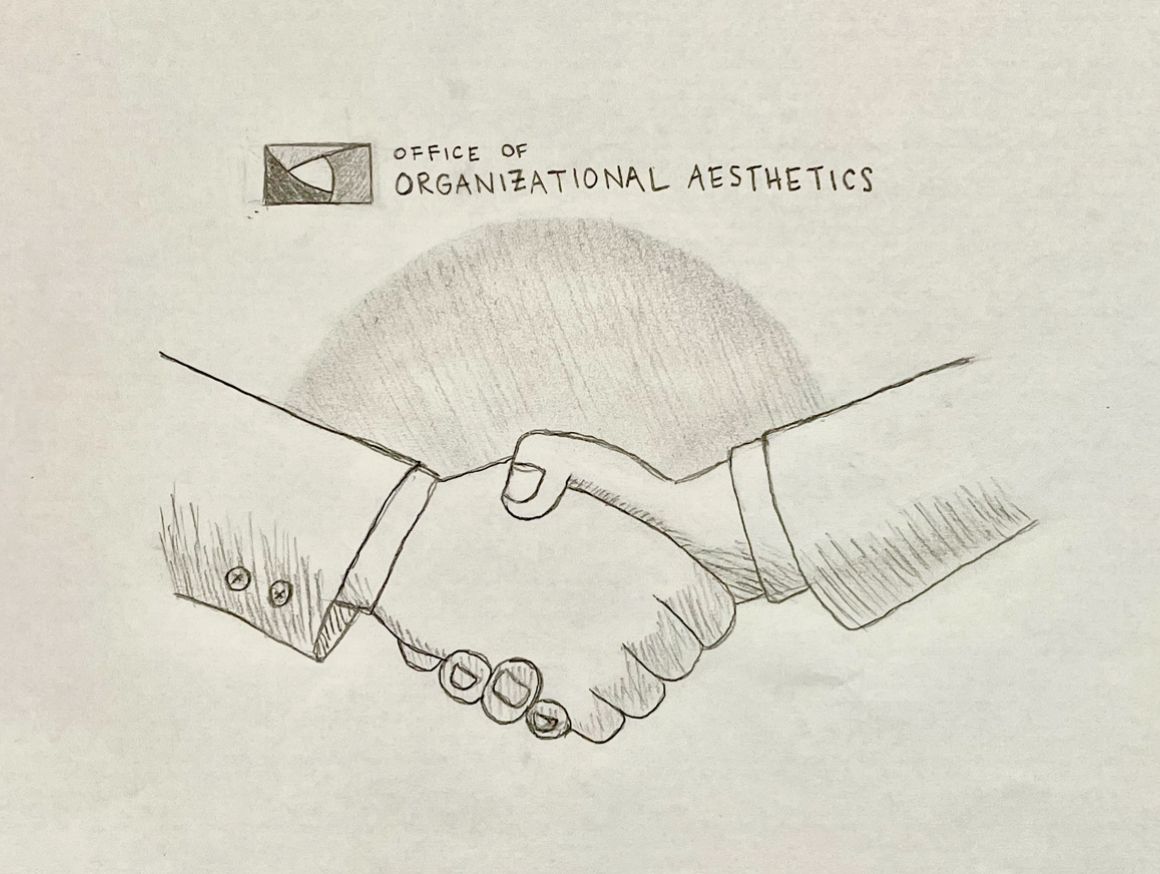Satire: An Interview with the New Senior Director of Organizational Aesthetics

In its unwavering commitment to institutional inclusivity, civil rights, and beauty, the college recently concluded its creation and search for a new position, the Senior Director of Organizational Aesthetics. In this issue, The Student interviewer sits down with the new Senior Director to better understand what their job involves.
Interviewer: Hi! So first things first: congratulations on your new position. We in the college community have been eagerly awaiting an update on the evolution of leadership in these crucial areas of inclusivity, civil rights, and beauty. Surely it must have been an aesthetic email to receive from the Chair!
Director: You don’t say. Thanks for interviewing me, by the way. Having served the college for the past 10 years, most recently as Director of Discourse, I’m overjoyed to be named the new aesthetician of organizations here. It’s certainly a noble position to hold, despite the lack of a history for it. It’s part of the process of the forward-looking college to continue to better its institutional management, dealing with complex personal and student matters and a wide range of projects aligned with the key aesthetics of the college’s administration, while protecting its tradition of being an intellectual haven. Our college’s administrative structures run deep and the networks are complex, and we are constantly determining administrative priorities in order to manage our various work in an aesthetic manner. The Chair and all of us in the administration are genuinely invested in doing our best. This really is a special place, you know?
Interviewer: So, what exactly does your job entail on a day to day basis?
Director: My job, primarily, is to determine and even improve the aesthetics of organizations in the college. Often, that means scrupulously refining the organizational structures of the administrative body of our institution. Our administrative body … [chef’s kiss] is truly a work of art. It’s an intricate machine, each cogwheel pulling the next, robust with mechanical details but also leaving no traces of flamboyance … it’s an unfortunate reality that many students, often when they get into trouble, only see the administration in its authoritarian pose. Even for those who frequent Converse Hall, the superficial representation of the administration, their admiration often stops at the imposing columns of its Beaux-Arts facade.
However, if you stand in the middle of the Converse first floor lounge just long enough, sooner or later, you’ll pick up the subtle note of a keyboard behind closed doors — and suddenly, you catch a glimpse of the lingering harmony weaved in the administrative symphony. My task, or more so my passion, is to capture this sense of organizational aesthetics that transcends the bounds of our language; then, I can seek to better our institution by, for the lack of better words, oiling this magnificent machine.
Interviewer: That sounds fascinating and valuable, like something out of a Kafka story! I love the utopian world-building in his works. Well, to be the devil’s advocate here, wouldn’t your addition to the administrative structure complicate or change its harmony?
Director: That’s a great question, I’m so glad you asked. In fact, only the Chair gets to decide when or what new parts are added or overworn gears are tossed out in our increasingly intricate machine. Gosh, I can’t begin to imagine the laborious and incredibly inventive works that must be required of the Chair. Most of the participants in the administrative body can only revere their little corner of the grandeur of the whole rhizomatic apparatus. Since I’m now the official aesthetician, I do spend a little more time indulging myself among the columns of Converse, listening and learning, taking it all in. But overall, the Chair manages the higher-level works of creation within the machine, and we know very little about the mystery that is the Chair’s work. But to attempt to interpret the Chair's work is to disrespect the elevated design of the Chair. The credit for it all, of course, goes exclusively to him. Fear not — the Chair’s work, although not quite understandable to us, has no flaws.
Interviewer: I see. You are so lucky to be working with the Chair. Lastly, we want to know: How did your past experience bring you here?
Director: A lifetime of dedication to beauty, institutional imagery, and love.
Interviewer: That’s profound, I’m going to write that down. Thank you for your time and wisdom.